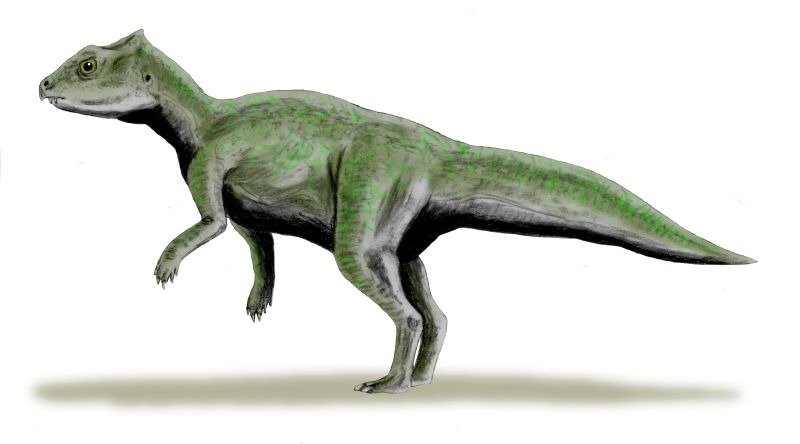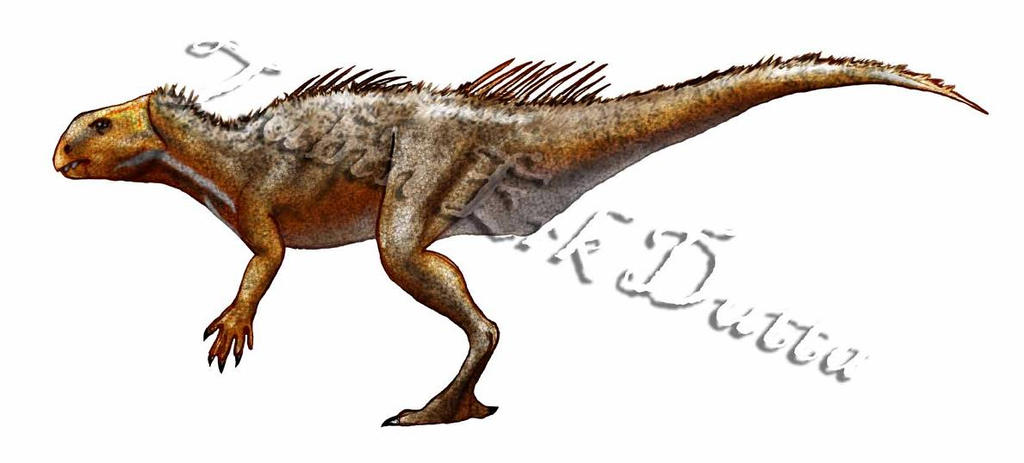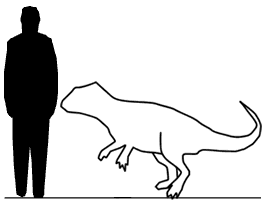[Recent Entries][Archive][Friends][User Info]
| Time | Text |
|---|---|
| 01:50 pm [Link] |
Yinlong Yinlong (meaning "hidden dragon") is a genus of basal ceratopsian dinosaur from the Late Jurassic Period of central Asia. It was a small, primarily bipedal herbivore, approximately 3 meters (9.8 ft) long. Yinlong is the oldest and most primitive ceratopsian known to science. A coalition of American and Chinese paleontologists, including Xu Xing, Catherine Forster, Jim Clark, and Mo Jinyou, described and named Yinlong in 2006. The generic name is derived from the Mandarin Chinese words 隱 (yǐn: "hidden") and 龍 (lóng: "dragon"), a reference to the movie Crouching Tiger, Hidden Dragon, large portions of which were filmed in the western Chinese province of Xinjiang, near the locality where this animal's fossil remains were discovered. Long is the word most often used in the Chinese media when referring to dinosaurs. The species was named after the late Will Downs, a frequent participant in paleontological expeditions to China, who died the year before Yinlong was discovered. The known fossil material of Yinlong consists of many skeletons and skulls. The first specimen discovered was a single exceptionally well-preserved skeleton, complete with skull, of a nearly adult animal, found in 2004 in the Middle-Late Jurassic strata of the Shishugou Formation located in Xinjiang Province, China. Yinlong was discovered in an upper section of this formation which dates to the Oxfordian stage of the Late Jurassic, or 161.2 to 155.7 million years ago. All other described ceratopsians are known from the later Cretaceous Period. A small rostral bone on the end of the upper jaw clearly identifies Yinlong as a ceratopsian, although the skull displays several features, especially the ornamentation of the squamosal bone of the skull roof, which were previously thought to be unique to pachycephalosaurians. The presence of these features in Yinlong indicates these as actual synapomorphies (unique features) of the larger group Marginocephalia, which contains both the pachycephalosaurs and the ceratopsians, although these features have been lost in all known ceratopsians more derived than Yinlong. The addition of these characters further strengthens the support for Marginocephalia. Yinlong also preserves skull features reminiscent of the family Heterodontosauridae, providing support for the hypothesis that heterodontosaurids are closely related to marginocephalians (Cooper, 1985; Zhao et al., 1999; You et al., 2003). The group containing Marginocephalia and Heterodontosauridae has been named Heterodontosauriformes (Xu et al., 2006). Yinlong was discovered with seven gastroliths preserved in the abdominal cavity. Gastroliths, stones stored in the digestive tract and used to grind plant material, are also found in other ceratopsians such as Psittacosaurus, and are also widely distributed in most other dinosaur groups, as well as in many types of birds.
Размеры тела в сравнении с человеком:
Ископаемые останки (1, 2, 3, 4):
|
| Reply: | |









